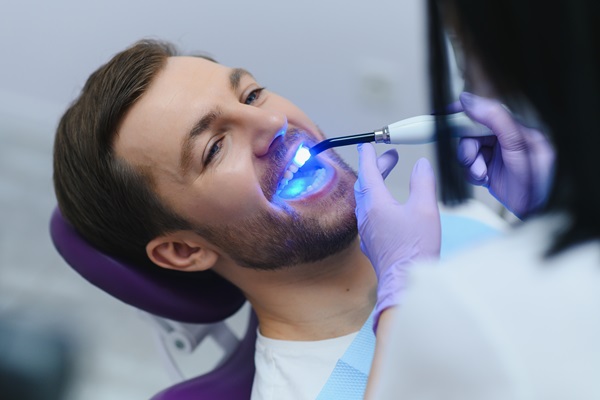What to Do if You Damage A Dental Filling

While damaging a dental filling can be painful and problematic, it is also manageable with the right steps. A dental filling can restore the structure of a tooth after decay or minor damage. However, fillings can sometimes chip, crack, or even fall out due to daily wear, biting on hard foods, or unexpected trauma. Proper management can prevent further complications and ease discomfort when a dental filling is damaged.
Evaluate the extent of the damage
The first step to managing a damaged dental filling is assessing the extent of the damage. It may be useful to check if the filling is partially dislodged, completely missing, or visibly cracked. In many cases, patients will be able to feel the rough edges or sharp surfaces in the affected area. In cases where pain or sensitivity to hot, cold, or pressure is present, the tooth may be exposed, indicating that immediate care is necessary.
In cases where pain or sensitivity to hot, cold, or pressure is present, the tooth may be exposed, indicating that immediate care is necessary.
Patients should refrain from chewing on the side of the mouth where the dental filling is damaged to avoid aggravating the problem — this minimizes stress on the affected tooth, reducing the risk of additional breakage.
Keep the area clean and protected
When a dental filling is damaged, the tooth becomes more vulnerable to bacterial buildup, food particles, and possible infection. Rinsing the mouth with warm salt water helps cleanse the area, lowering the risk of bacteria settling in the exposed portion of the tooth. Patients can prepare a mild saltwater rinse by mixing half a teaspoon of salt in warm water. Swishing the solution gently around the affected tooth will help clean it while relieving sensitive gums.
Avoiding sugary foods, acidic drinks, or foods that can get trapped in the area of the damaged dental filling is also helpful. Sometimes, dental wax or a temporary dental repair kit can shield the area until professional care is received.
Manage pain and discomfort
Damage to a dental filling can sometimes lead to discomfort or heightened sensitivity. Over-the-counter pain relief options, such as acetaminophen or ibuprofen, can help manage mild pain or discomfort associated with a broken filling. Avoiding very hot, cold, or sugary foods and beverages prevents discomfort until the patient is able to seek professional dental care.
In some cases, desensitizing toothpaste can temporarily reduce the sensitivity around the damaged filling. It is essential to avoid placing aspirin or other pain-relief medications directly on the affected tooth or gums, as this can irritate the tissue and potentially worsen the discomfort.
Contact a general dentist promptly
Seeking prompt dental care is vital when a dental filling is damaged. A damaged filling leaves the tooth vulnerable to further decay, structural weakening, and infection. The affected tooth can be treated before complications develop by contacting a general dentist as soon as possible. A dentist will assess the tooth's condition and recommend the best course of action, which may involve a new filling, crown, or other restorative treatment, depending on the extent of the damage. It is important to inform the dental office of any specific symptoms, such as pain, swelling, or heightened sensitivity.
Know the common repair options
After evaluating the damaged dental filling, the dentist will determine the appropriate repair option. In many cases, replacing the filling may be sufficient to restore the tooth's structure and function. This involves removing any remaining filling material, cleaning the cavity, and placing a new filling. In cases where the tooth is weakened, or the damage is extensive, a general dentist may recommend a crown to provide added strength and protection.
Prevent future damage to dental fillings
While dental fillings are durable, they are not indestructible. Patients can prevent future damage by avoiding hard foods or objects, such as ice, candies, and pens. A balanced diet low in acidic and sugary foods can also support the longevity of dental fillings and oral health. Regular dental check-ups allow a general dentist to monitor the condition of existing fillings, detect any signs of wear, and make repairs if necessary.
Consult a general dentist
A damaged dental filling may seem alarming, but with the right approach, the situation can be managed effectively. A general dentist can provide the necessary treatment to repair or replace the damaged filling, ensuring the tooth is protected and functional. With proper care and preventive measures, dental fillings can continue to serve their purpose and maintain a healthy, pain-free smile. For more information, schedule a consultation visit today at GDC Smiles.
Request an appointment here: https://gallodental.com or call GDC Smiles at (770) 504-5725 for an appointment in our Gainesville office.
Check out what others are saying about our dental services on Yelp: Dental Filling in Gainesville, GA.
Recent Posts
Dental fillings can restore teeth with minor fractures or cavities. Your general dentist can use them to enhance jaw functions by evening out dental surfaces. These restorations can also improve the appearance of the affected teeth. Understanding how dental fillings work can help you prepare well for your next appointment.This meeting is an essential first…
Gum recession is one of the many conditions that can be treated with the use of composite fillings. Receding gums can reduce confidence in the appearance of a person's smile and increase the risk of tooth sensitivity and decay. Fortunately, with treatment, this condition can often be stopped or reversed.Gum recession occurs when the gums…
Using dental fillings to treat cavities is one of the most common types of routine dental care. The American Dental Association reports that approximately 91% of adults will experience at least one cavity in their permanent teeth at some point in time. Fortunately, the high demand for this type of dental work has led to…
There are many routine dental procedures patients typically experience annually. The most common elements of dental checkups include X-rays and a cleaning. However, what happens if there is a problem with the gums? Even the most diligent patient may sometimes miss the early warning signs of gum disease. In this case, the dentist may perform…


